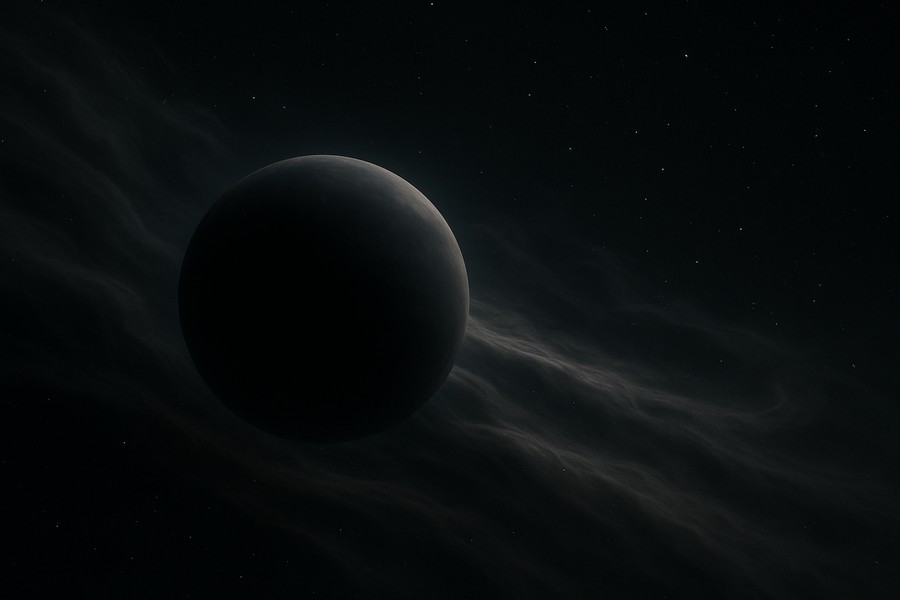
Enigmatic Free-floating Celestial Body Consuming Massive Amounts of Cosmic Debris
An unusual "free-floating cosmic body" has been spotted feasting on an extraordinary amount of gas and dust, a whopping 6 billion tons per second. This discovery has raised intriguing questions on the boundaries between planets and stars.
Contrary to planets like Earth and others in our solar system that orbit a star, these "free-floating cosmic bodies" wander aimlessly through the universe, not tethered to a specific star.
Experts predict that our galaxy alone might be home to trillions of these celestial wanderers. However, they prove hard to detect due to their silent drift through the eternal darkness of space.
Despite the common perception of planets as peaceful and steady worlds, this new find reveals that objects of planetary mass wandering aimlessly in space can be lively places, according to Victor Almendros-Abad, one of the main architects of the recent study.
The Enigma of the Space Wanderers
These odd objects captivate astronomers since they do not fit into the category of a star or a conventional planet. According to Alexander Scholz, a prominent astronomer and a co-author of the study, the origin of these bodies is still a mystery. Are they small-mass objects formed like stars, or are they giant planets that were expelled from their home systems?
The team astounded by this discovery observed a remarkable growth spurt in a rogue planet located about 620 light-years away from Earth in the Chamaeleon constellation.
The celestial body, officially designated as Cha 1107-7626, carries a mass five to 10 times that of Jupiter. Scholz explains that the object is still in its early stages of formation, being only approximately 1 or 2 million years old.
Growth Spurt in the Cosmic Wanderer
The astronomical body grows by absorbing matter from a disk that surrounds it, a process known as accretion. However, the event that unfolded with Cha 1107-7626 has blurred the distinction between stars and planets, according to study co-author Belinda Damian.
Earlier this year, the planet began consuming matter from its disk at an unprecedented rate of 6 billion tons per second, which is eight times faster than the rate a few months prior.
"This is the most intense accretion episode ever recorded for an object of planetary mass," commented Almendros-Abad.
Star-like Phenomenon Observed in a Planetary Mass Object
By comparing the light emitted before and during this binge-eating session, the scientists discovered that magnetic activity played a role in driving matter towards the object. This behavior has only been observed in stars up until now. Furthermore, the disc's chemistry also changed. Water vapor was detected in the disc during the accretion episode, but not beforehand. This too is a phenomenon typically observed in stars and never before in a forming planet.
Ray Jayawardhana, the lead author of the study, suggests that the discovery implies "some objects comparable to giant planets form the way stars do, from contracting clouds of gas and dust, accompanied by discs of their own, and they experience growth episodes just like newborn stars."
Despite its peculiar nature, Cha 1107-7626 is expected to exhibit characteristics similar to large planets due to its size. Scholz explains that unlike stars, this object is "not massive enough to ever experience fusion reactions in the core."
Therefore, like other planets, "it will inevitably cool as it ages," he continued.
Amelia Bayo, another co-author of the study, found the idea that a planetary object could behave like a star to be "awe-inspiring." She added that it "invites us to wonder about the nature of worlds beyond ours during their early stages."
The observations were made with the help of a Very Large Telescope located in Chile.
